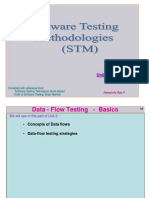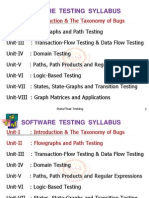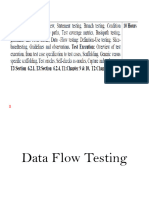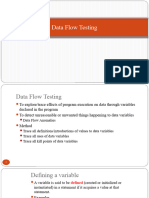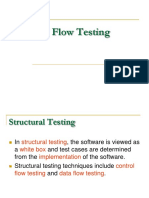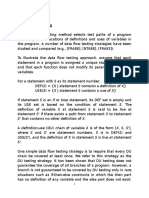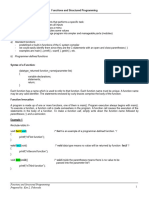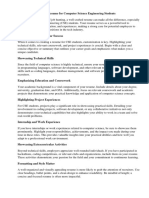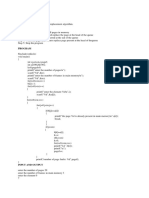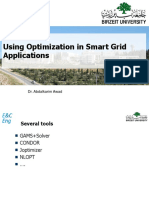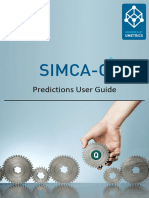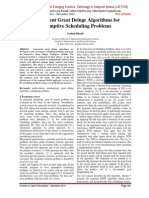0% found this document useful (0 votes)
9 views35 pagesData Flow Testing-II
The document discusses dynamic data flow testing strategies, emphasizing the limitations of static analysis and the necessity of dynamic testing to trace variable definitions and usages. It outlines various testing strategies such as All-du Paths, All-uses, and All-Definitions, providing examples and control flow graphs for better understanding. Additionally, it covers loop testing techniques, including simple, nested, concatenated, and unstructured loops, highlighting their importance in software testing.
Uploaded by
Rahul DasCopyright
© © All Rights Reserved
We take content rights seriously. If you suspect this is your content, claim it here.
Available Formats
Download as PPTX, PDF, TXT or read online on Scribd
0% found this document useful (0 votes)
9 views35 pagesData Flow Testing-II
The document discusses dynamic data flow testing strategies, emphasizing the limitations of static analysis and the necessity of dynamic testing to trace variable definitions and usages. It outlines various testing strategies such as All-du Paths, All-uses, and All-Definitions, providing examples and control flow graphs for better understanding. Additionally, it covers loop testing techniques, including simple, nested, concatenated, and unstructured loops, highlighting their importance in software testing.
Uploaded by
Rahul DasCopyright
© © All Rights Reserved
We take content rights seriously. If you suspect this is your content, claim it here.
Available Formats
Download as PPTX, PDF, TXT or read online on Scribd
/ 35







